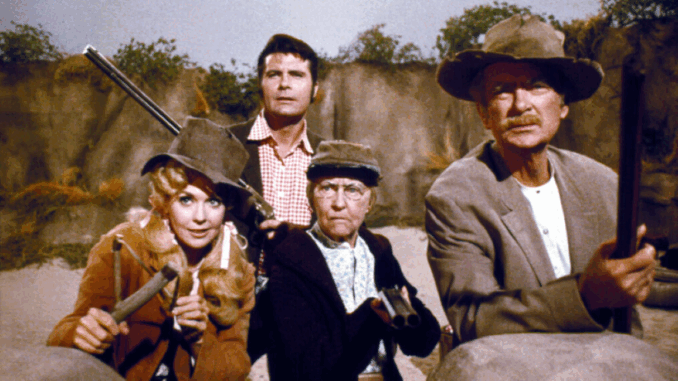
When TV series creator Paul Henning was driving cross-country in 1959, he stopped to see Abraham Lincoln’s log cabin, and the visit sparked an idea that would eventually become The Beverly Hillbillies. Henning later recalled, “Here we were, barreling along the highway at 60 miles an hour, and we wondered, ‘What if somebody from the Civil War period were suddenly brought down in this world of 1959?’ This became part of the Beverly Hillbillies concept because I thought, ‘Now how could you find somebody who still lives in the past?’”
When The Beverly Hillbillies premiered in 1962, it seemed that audiences loved the concept too, as the show shot to the top of the Nielsen ratings faster than even I Love Lucy. Cultural critics later found deeper meaning in the series. As David Marc wrote in The Village Voice, Henning “zoomed to the top of the Nielsens on a folkish vision of America that glorified the ethical and physical superiority of the backwoodsman at the expense of contemporary urban society.” Henning himself never claimed to be making a statement and once said that he just wanted to entertain.

Everett Collection
The Beverly Hillbillies was only the beginning. CBS immediately called on Henning again, and he delivered Petticoat Junction in 1963 and Green Acres in 1965. Fans later called it the “Hooterville Trilogy,” three sitcoms built on his love of rural life. Even as critics rolled their eyes at “country bumpkin” humor, the ratings proved viewers couldn’t get enough. Bea Benaderet became the heart of Petticoat Junction while Eva Gabor‘s casting on Green Acres gave the show its edge.
By 1971, Henning’s run came to an abrupt end. CBS, eager to find younger urban audiences, cleared its schedule of rural comedies, even though many were still pulling in strong numbers. Henning wasn’t bitter. “We had a healthy, successful run,” he said. “And the shows are still in syndication.” They became the kind of comfort-viewing that nostalgic fans still love today.
